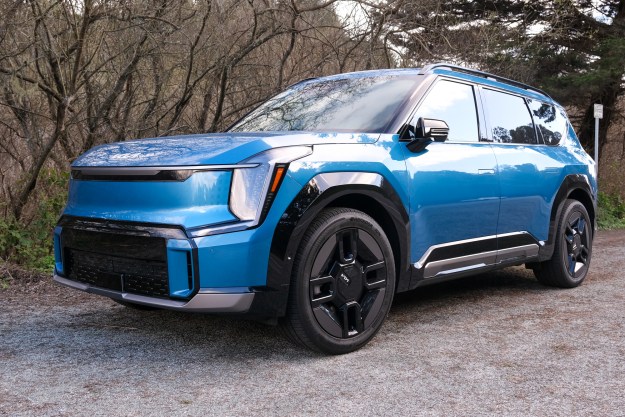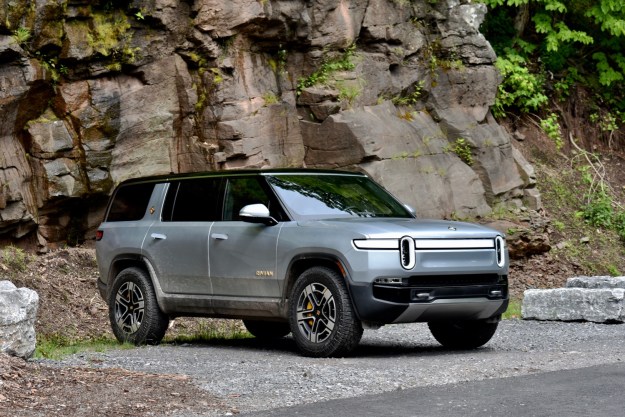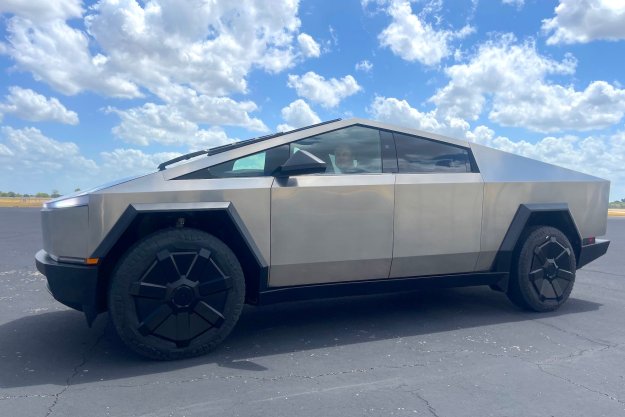Cruise control is the perfect way to neuter a good sports car. It doesn’t really matter whether you’re driving a Porsche 911 GTS or a Volkswagen Passat when you’re one-hand-steering your way down I-80 at a steady five-over, with your right leg resting lazily in the footwell. That was the case until now. Porsche developed its InnoDrive system to deliver stress-free cruising without muting a car’s performance genes.
Data-driven
Porsche InnoDrive is the carmaker’s next-generation cruise control. It knows almost as much about the car, its capabilities, and its surroundings as the driver, but it learns in a different way.

The software relies partly on data sent by the car’s various sensors – like the ones installed to monitor the steering angle – to calculate the ideal driving strategy for a particular route. It can tell when the road is wet (or when it’s snowing) by analyzing how Porsche’s Stability Management (PSM) technology intervenes, which eliminates the need to incorporate weather data. InnoDrive is entirely sensor-based; none of the information it feeds on comes from (or via) the internet.
Sensors are just one part of the equation. InnoDrive also uses the on-board camera to “read” traffic signs, though a Porsche spokesman told us it doesn’t recognize traffic lights yet. Finally, it consults navigation data provided by digital mapmaker HERE to tell when there’s a hill it needs to accelerate for, when there’s a bend it should to slow down for, and when there’s a roundabout the driver needs to know about. It also helps balance the two power sources that make up a hybrid drivetrain by selecting which parts of the route are best driven under gasoline power, which ones require only electricity, and which ones necessitate both.
InnoDrive is entirely sensor-based; none of the information it feeds on comes from (or via) the internet.
InnoDrive stitches all this data together stay nearly two miles ahead of the driver at all times, Gernot Döllner, the head of the Panamera model line, told Digital Trends during a press briefing at Porsche headquarters. A screen located on the left side of the instrument cluster clearly displays every morsel of information related to the software.
As always, there are a handful of ifs and buts. Döllner explained Porsche can’t offer InnoDrive all around the world – at least not yet – because the system needs a highly accurate map to function. There’s no sense in building a car that brakes for bends if it slows down 500 yards too late, or if it can’t tell which road it’s on to begin with. InnoDrive works all over the United States, but other parts of the world will have to settle for regular adaptive cruise control in the foreseeable future. You can’t fool the system, as it automatically goes to sleep when it detects the car enters a country where it can’t perform properly.
Spirited software
We experienced InnoDrive in the latest Panamera 4 E-Hybrid on the roads around Stuttgart, Germany, where the company is based and its official museum is located. We noticed the dynamism varies greatly depending on the driving mode selected. Mind you, this is a Panamera we’re talking about; you can’t dial in the suppleness of an old Buick Roadmaster.
When left in normal mode, the car accelerates less abruptly and it takes corners with less eagerness than a human driver with a need for speed. It’s close to what we’d consider an average pace. Note that InnoDrive doesn’t make the Panamera autonomous; far from it. It’s a level two system at best, meaning the driver still needs to keep his or her hands on the steering wheel.

The pace picks up considerably in sport mode. InnoDrive hurls the Panamera into bends like Juan Manuel Fangio would (though we’re told it’s not as fast as an experienced driver), brakes considerably harder, and summons more of the engine’s power as it accelerates out of a turn. This isn’t the option you’d want to choose for laid-back cruising. It’s incredibly lively, and you’d better keep up with the steering if the road you’re on is even a little bit twisty. The system slows down if it detects more steering input than it’s prepared for.
When it comes to driving a sports car spiritedly on an enjoyable country road, we’d rather do it ourselves than share the experience with the on-board sensors. Porsche explained not every driver thinks that way, and it’s important to give motorists choices. Those who want the assistance of InnoDrive can turn it on; those who don’t can ignore it and gun it themselves. The Panamera never forces its tech features upon the driver, a trait we appreciate.
We liked InnoDrive most on the German autobahn. That might be difficult to believe; you’re probably thinking, “but it’s the autobahn, and you’re driving a Porsche, why aren’t you checking out its top speed?” Precisely because it’s the autobahn. Not every section of Germany’s highway system is unlimited, roadwork is unusually common, and heavy traffic is par for the course.
In this environment, InnoDrive regulates the car’s speed by taking traffic conditions and the ever-changing speed limits into account. You really notice it’s one step ahead when the Panamera begins to climb a hill. With cruise control, there would be a lag. The car would lose speed, it would probably downshift, accelerate frantically, upshift, and finally settle at a speed more or less close to what it’s set to. With InnoDrive, the fuss gets taken out because the car already knows it needs to speed up to keep up.
The only Porsche currently available with Innodrive is the second-generation Panamera. The brand-new recently introduced third-generation Cayenne will also offer the brand’s super-cruise control when it goes on sale next year, and the technology will gradually spread to other models (like the Panamera Sport Turismo) in the next few years. It will be an option priced in the vicinity of $4,000, but we predict it’s a box many buyers will tick.




